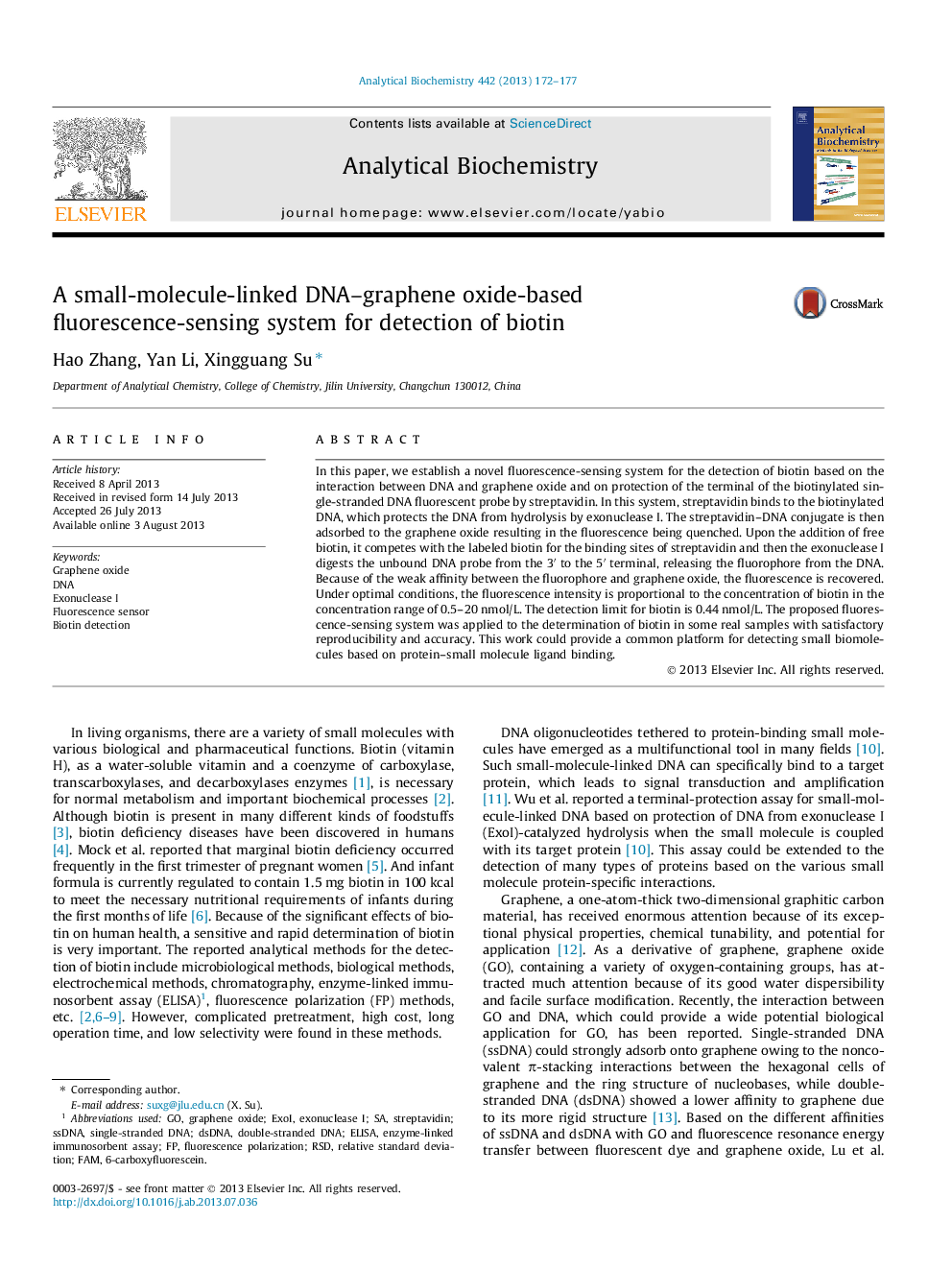| Article ID | Journal | Published Year | Pages | File Type |
|---|---|---|---|---|
| 1173671 | Analytical Biochemistry | 2013 | 6 Pages |
In this paper, we establish a novel fluorescence-sensing system for the detection of biotin based on the interaction between DNA and graphene oxide and on protection of the terminal of the biotinylated single-stranded DNA fluorescent probe by streptavidin. In this system, streptavidin binds to the biotinylated DNA, which protects the DNA from hydrolysis by exonuclease I. The streptavidin–DNA conjugate is then adsorbed to the graphene oxide resulting in the fluorescence being quenched. Upon the addition of free biotin, it competes with the labeled biotin for the binding sites of streptavidin and then the exonuclease I digests the unbound DNA probe from the 3′ to the 5′ terminal, releasing the fluorophore from the DNA. Because of the weak affinity between the fluorophore and graphene oxide, the fluorescence is recovered. Under optimal conditions, the fluorescence intensity is proportional to the concentration of biotin in the concentration range of 0.5–20 nmol/L. The detection limit for biotin is 0.44 nmol/L. The proposed fluorescence-sensing system was applied to the determination of biotin in some real samples with satisfactory reproducibility and accuracy. This work could provide a common platform for detecting small biomolecules based on protein–small molecule ligand binding.
